Get PeakVisor App
Sign In
Search by GPS coordinates
- Latitude
- ° ' ''
- Longitude
- ° ' ''
- Units of Length

Yes
Cancel
Share ×

Scan the QR code and open PeakVisor on your phone
❤ Wishlist ×
Choose
Delete
Kluane National Park and Reserve covers 8,499 square miles of the southwest corner of the smallest and westernmost of Canada’s territories – the Yukon. Kluane National Park and Reserve, which was established in 1972, consists of two units of the national park system that sit near the Alaskan border. Like Waterton Lakes National Park and Glacier National Park, which form the Waterton-Glacier International Peace Park. Kluane, Wrangell-St. Elias, Glacier Bay, and Tatshenshini-Alsek Parks form a 24,205,983-acre international park system.
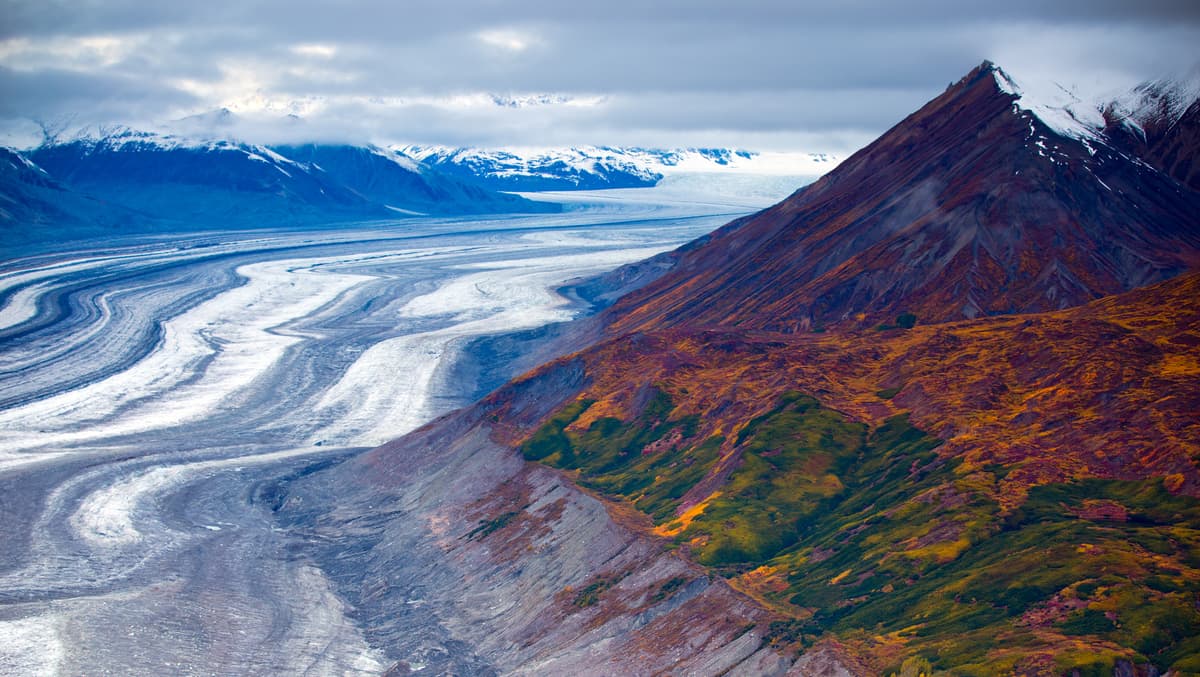
In 1979, the Kluane / Wrangell–St. Elias / Glacier Bay / Tatshenshini-Alsek park system, which contains the largest non-polar icefield in the world, was designated a UNESCO World Heritage Site to recognize the region’s spectacular glacial landscape and icefields, as well as its grizzly bear, caribou, and Dall’s sheep habitat.
Kluane National Park and Reserve is a park packed with superlatives. Almost the entire park (83% to be exact) is covered in ice and mountains. Over 2,000 glaciers, some of which measure a kilometer thick, are scattered throughout the landscape. The park also houses Canada’s highest point and the second tallest peak in North America, Mount Logan, which reaches an impressive height of 19,596 feet.

Kluane’s mountainous landscape is dominated by two northwest-southeast trending mountain systems – the St. Elias Mountains in the southwest and a narrow front ridge of the St. Elias Mountains, the Kluane Ranges, in the northeast. The high, rugged, and heavily glaciated St. Elias Mountains contain noteworthy glaciers like the Steele, Kaskawulsh, and Lowell glaciers, as well some of the park’s tallest summits like Mount Logan, Mount St. Elias, King Peak, Mount Vancouver, Mount Hubbard, and Mount Steele. The Kluane Ranges, a shorter and more rounded set of summits, is separated from the St. Elias Mountains by the Duke Depression and contains peaks averaging 6,000 feet in elevation. This part of the park is more densely vegetated and is inhabited by more wildlife than the rest of the park.

Aside from its mostly unclimbed, glaciated peaks, vast ice fields, crystalline lakes, and spectacular glaciers, Kluane National Park and Preserve is well-known for its wildlife. Caribou, grizzly bear, black bear, Dall sheep, Yukon moose, wolverine, arctic ground squirrel, and mountain goat are a few of the well-known residents of the park. Some 150 bird species, including golden and bald eagles, also inhabit this isolated tundra.
Despite the park’s relative isolation and unforgiving climate, archaeologists believe humans, specifically the Tutchone, lived in the area after the last ice age. Explorers, hunters, and prospectors settled near Kluane beginning in the 1890s and after the completion of the Alaska Highway in 1942, the area saw a significant increase in development.
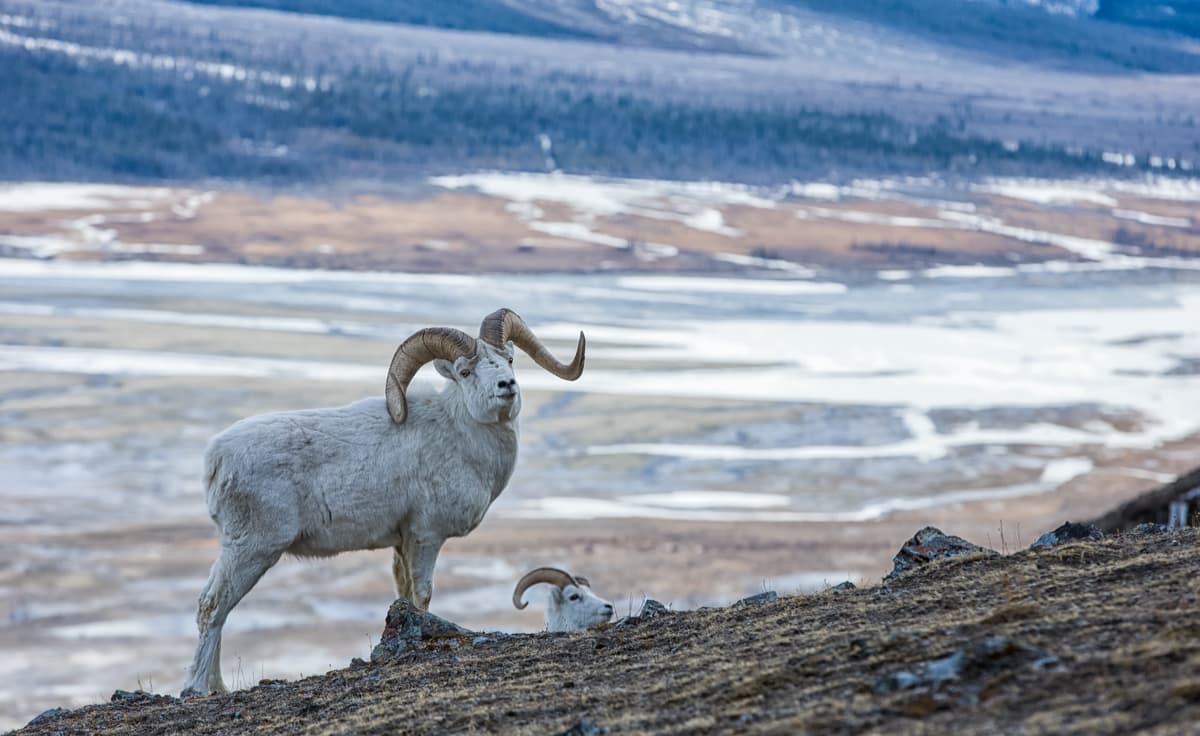
Today, Kluane remains a mostly untamed wilderness teeming with natural grandeur. In fact, most of the park is not accessible by road, so you can expect to fly in via a small Cessna or helicopter. Alternatively, visitors can reach Haines Junction by driving the Alaska Highway or Haines Road. Both roads parallel the park boundary. However, to access the heart of the park requires traveling by air, foot, raft, or skis.
It’s important to note that Kluane National Park and Reserve contains mostly routes, rather than trails. What’s the difference? Trails are generally marked, signed, or visible. A route is not marked or maintained, so good navigational skills are needed.

Fortunately, there are a number of footpaths to choose from ranging from short strolls to multi-day route-finding adventures. Just keep in mind, Kluane is a remote wilderness park and visitors are expected to be self-sufficient.
Easy trails include Soldier’s Summit, Kokanee, and Rock Glacier. For more of a challenge, consider hiking St. Elias Lake, King’s Throne, or to the summit of Mt. Decoeli.
To give your legs a break, spend some time at Kathleen Lake, a road accessible lake that offers a scenic waterfront day-use area, boat launch, and 39 campsites with potable water.
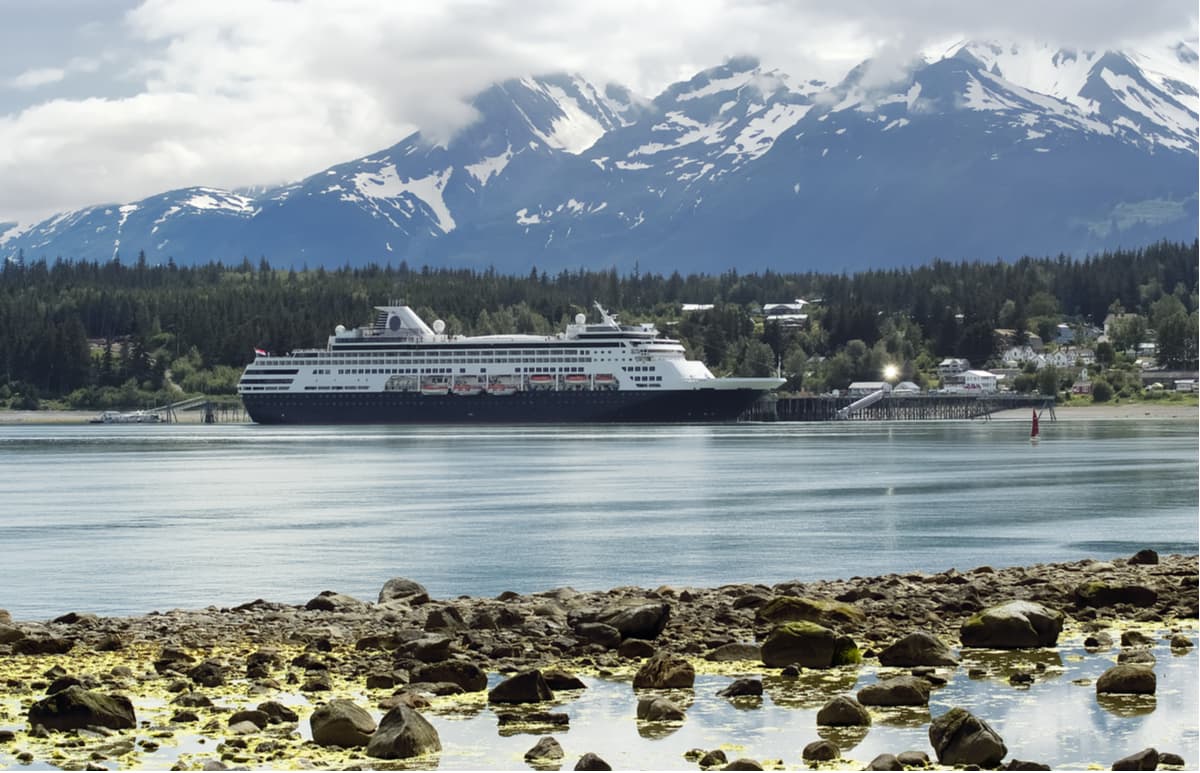
Known as the gateway to the Kluane National Park and Reserve, Haines Junction is a small community that lies within the traditional territory of the Champagne and Aishihik First Nations. The village, which sits amidst the grandeur of the St. Elias Mountains, houses the Kluane National Park Visitor Center, a number of fascinating cultural exhibits, and offers unforgettable flightseeing and rafting excursions into the park. So, whether you’re looking to head into the backcountry, take a scenic flight over iconic St. Elias summits, or drive along the famed Alaska Highway, Haines Junction is an excellent starting point for your adventure.
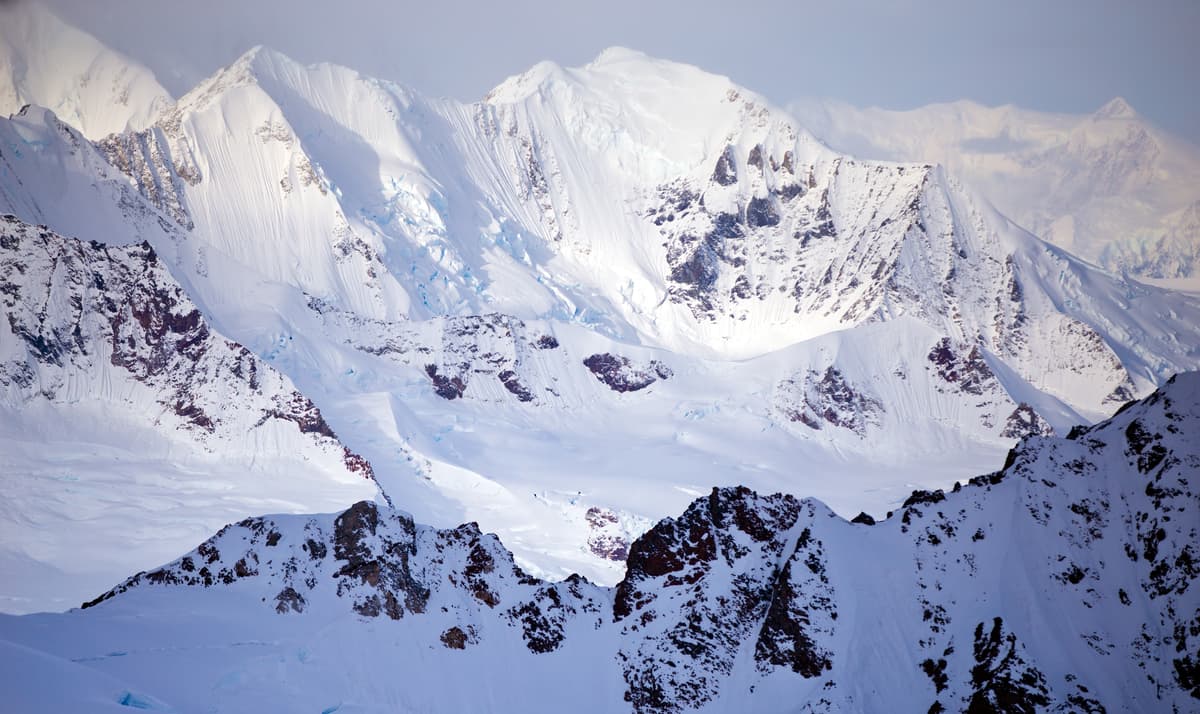
Nestled beside Bear Creek in the Alsek Valley, The Mount Logan Lodge sits west of Haines Junction along the Alaska Highway. The main lodge is a quaint log building with a handful of rooms and suites. There are also a few unique accommodations scattered throughout the property, including a yurt, a converted school bus, and an authentic gold rush era log cabin. In the morning, guests can enjoy a complimentary breakfast made with fresh ingredients grown in the lodge’s innovative greenhouse. Mount Logan Lodge is close to both Haines Junction and Kathleen Lake, making it the perfect option for exploring popular trails in the park.
The Dalton Trail Lodge sits approximately 40 km (24 miles) south of Haines Junction and is a popular basecamp for exploring the southern part of Kluane National Park and Reserve. The lodge is not only one of the more ‘upscale’ options near the park, it’s also close to the Rock Glacier trail, King’s Throne, and Kathleen Lake. The Dalton Trail Lodge is nestled on the shores of Dezadeash Lake, making it particularly popular for fishing, and offers visitors fully equipped two-bedroom cabins.
Explore Kluane National Park and Reserve with the PeakVisor 3D Map and identify its summits.







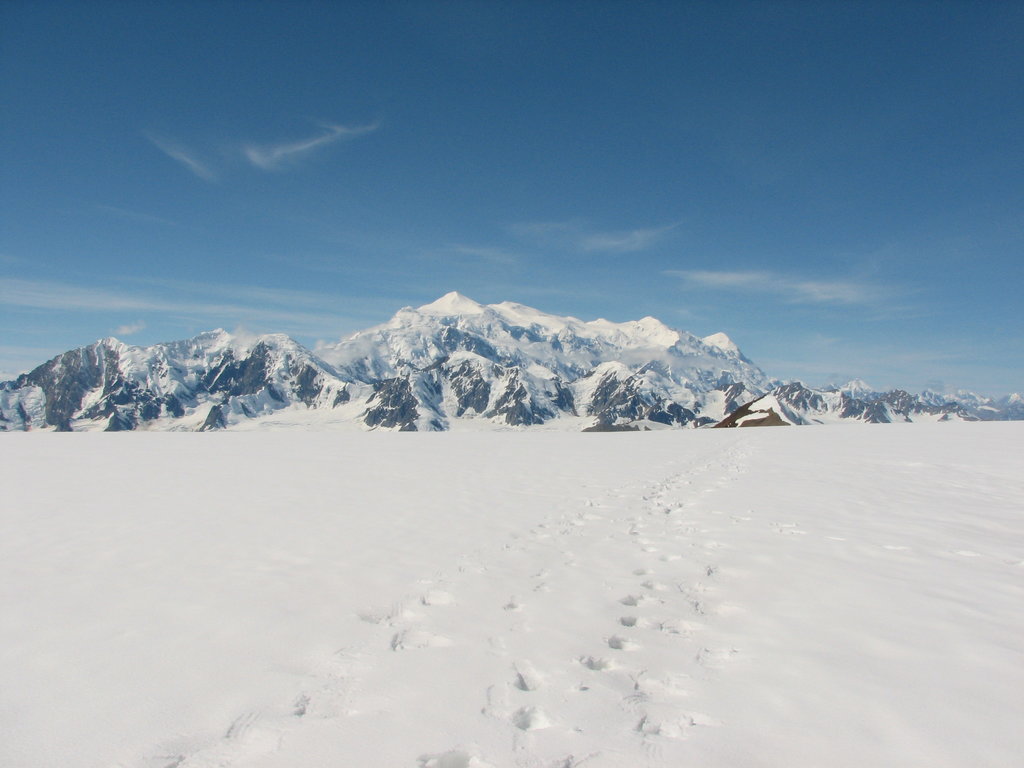
ultra
4000ers-canada
canada-sampler
yukon-ultras
14er
ultra
glacier
4000ers-canada
alaska-13ers
fred-beckey-great-peaks
canada-sampler
alaska-ultras
yukon-ultras
ultra
4000ers-canada
canada-sampler
yukon-ultras
14er
ultra
4000ers-canada
alaska-13ers
alaska-ultras
yukon-ultras
14er
ultra
4000ers-canada
alaska-13ers
alaska-ultras
yukon-ultras
ultra
4000ers-canada
canada-sampler
yukon-ultras
14er
ultra
glacier
4000ers-canada
alaska-13ers
fred-beckey-great-peaks
canada-sampler
alaska-ultras
yukon-ultras
ultra
4000ers-canada
canada-sampler
yukon-ultras
14er
ultra
4000ers-canada
alaska-13ers
alaska-ultras
yukon-ultras
14er
ultra
4000ers-canada
alaska-13ers
alaska-ultras
yukon-ultras
13er
ultra
4000ers-canada
alaska-13ers
alaska-ultras
yukon-ultras
